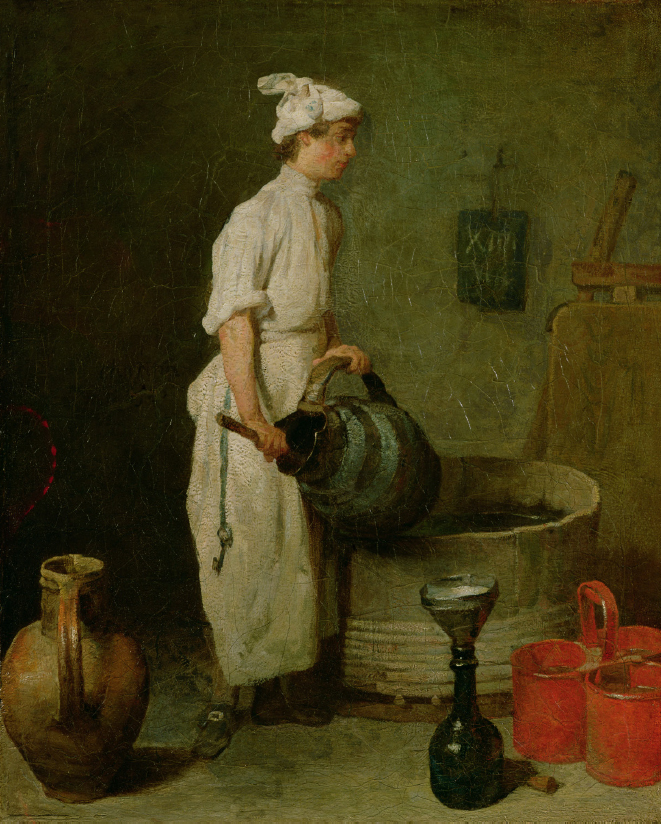DOCUMENT 18.4: Jean-Baptiste-Siméon Chardin Servants at Work
DOCUMENT 18.4
Jean-Baptiste-Siméon Chardin Servants at Work: Woman Drawing Water from a Copper Cistern, 1733, and The Cellar Boy, 1738
Chardin produced a number of paintings of servants at work. They are striking for their realistic depictions of work and working conditions, but also for their portrayal of the emotional and psychological aspects of service. In Woman Drawing Water from a Copper Cistern, we see a female servant, bent over, head down, eyes fixed on the task at hand. Behind her, through the doorway, we see another female servant sweeping, her downward gaze mirroring that of the woman in the foreground. The Cellar Boy, in contrast, shows us a young man lost in contemplation. Perhaps taking advantage of the relative privacy of the cellar, he stands upright, staring into the distance, all but unaware of the work his hands perform. As you examine the two paintings, consider how Chardin wanted his viewers to perceive these subjects. How might an eighteenth-century art audience, almost all of them employers of servants, have responded to these works?
Woman Drawing Water from a Copper Cistern, 1733

The Cellar Boy, 1738

QUESTIONS TO CONSIDER
Question
pLb7mJv4Sohoabvzbf4zsuwpDCGZ4Lae1keHKxouYpgChAZh3ZOUeGoLdPiN36EZ1oRYcl3Bo37bvSEQfv9jhaWVTDr/B5U13ynDtS32X3/BSBiFYaBTLF0hcyezQIps49WuTfVlqHKcnV2I/HC3Qqcqhp7vuT9iYmXGGdNuszdv82WY0BDg1Ugmds/NYsleYG//USa8klG5yDFUjZ4qw9t2lbY=Question
SUWTM42SSD4kzyDG8UtwxDxQKG2CByH2rlU53q1AiCxrOehN3UByvQHP09gC64EUezLpa/zxPxMnMTgmMk0n+y+muW0AjGoGTY83cvyXFwuBeeFfMTgx7pmIRjIIDOXNnKb5hSfqrHPbRvKgy6V2cgUPKq8=